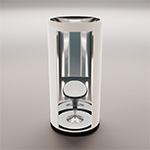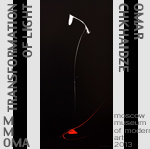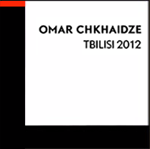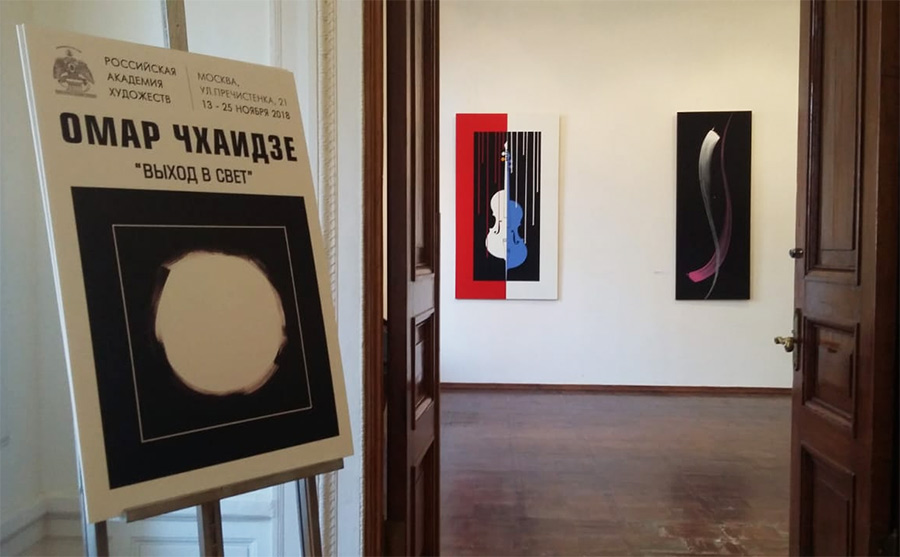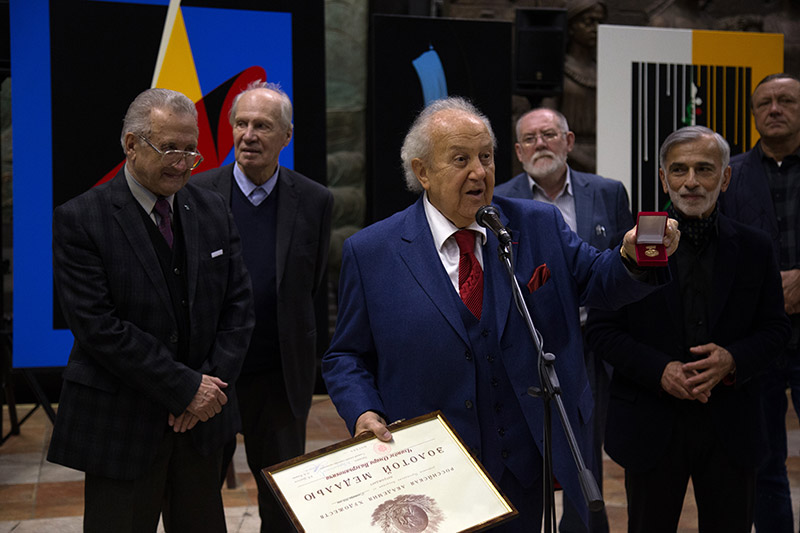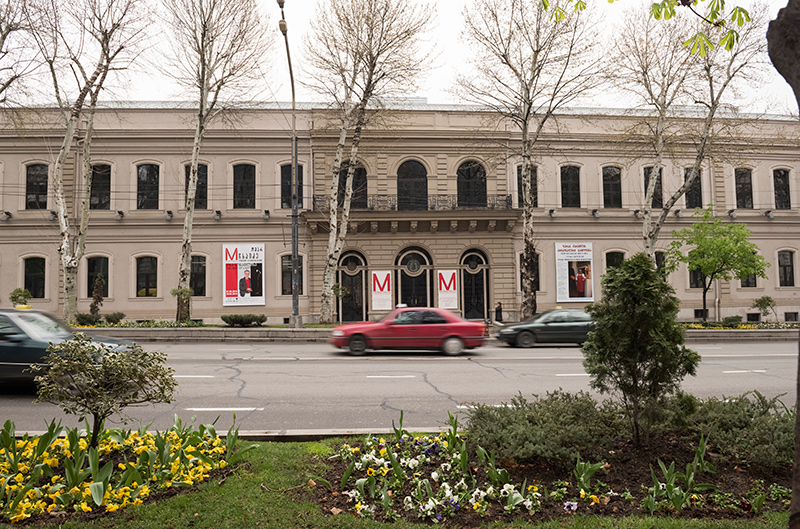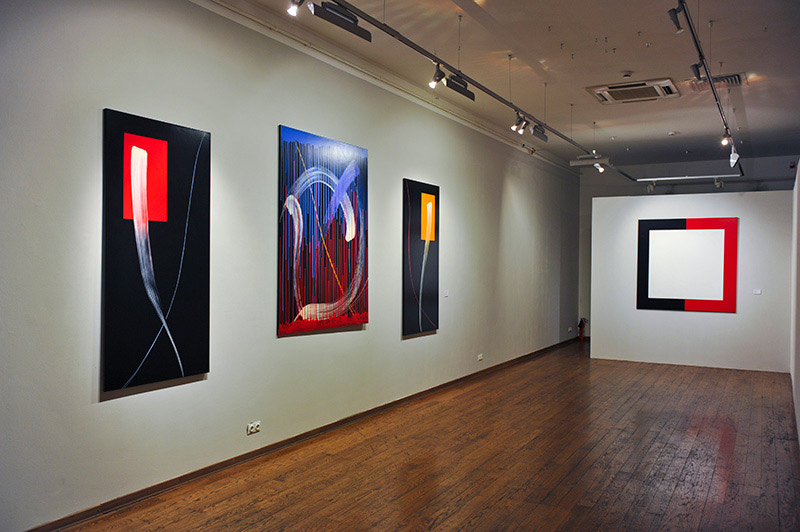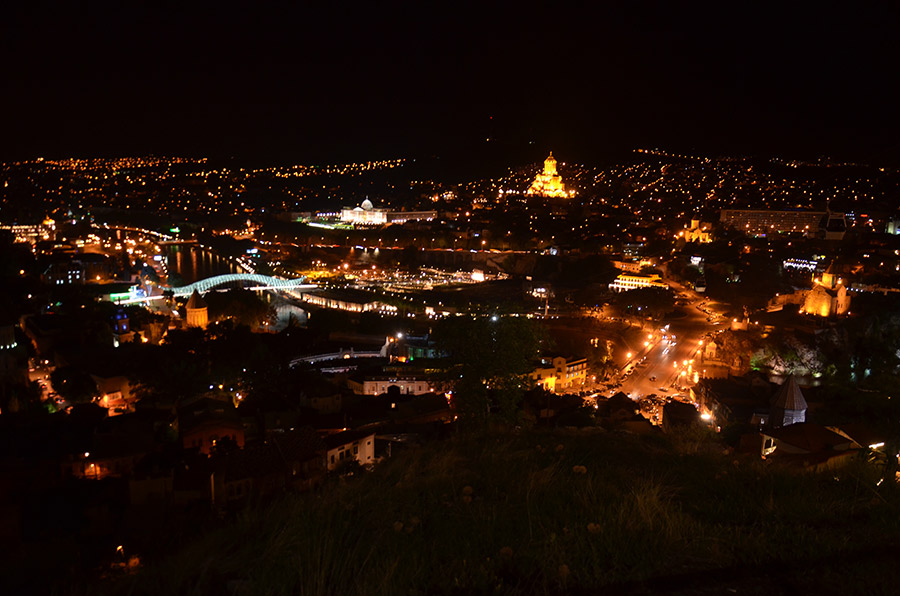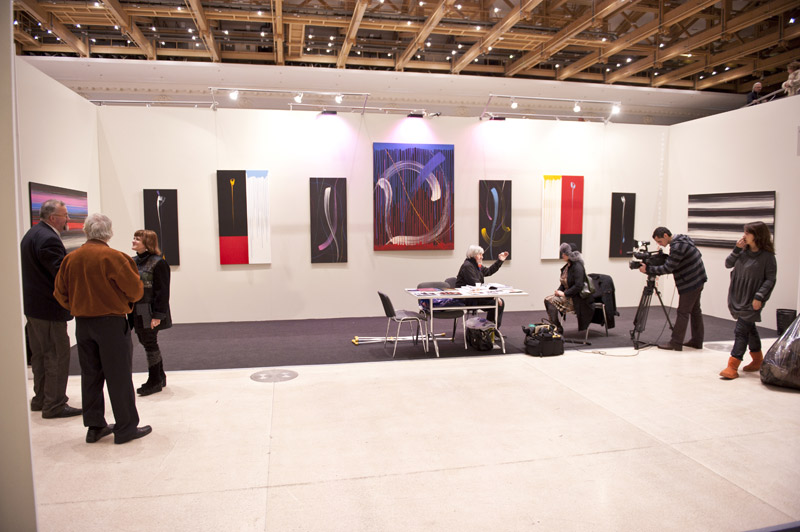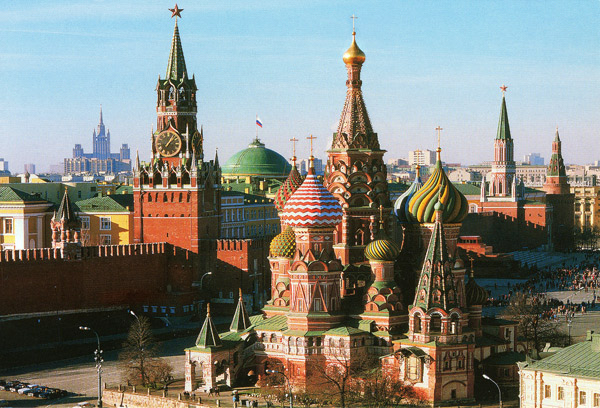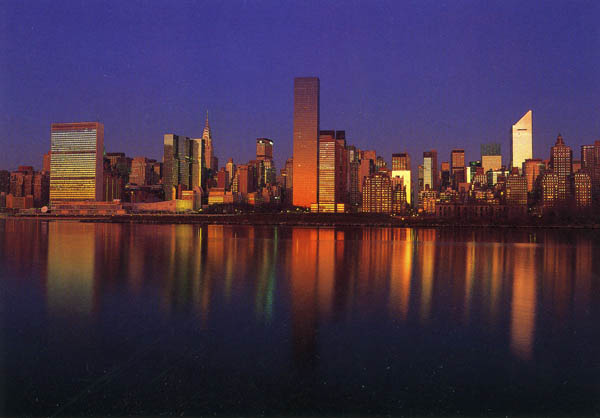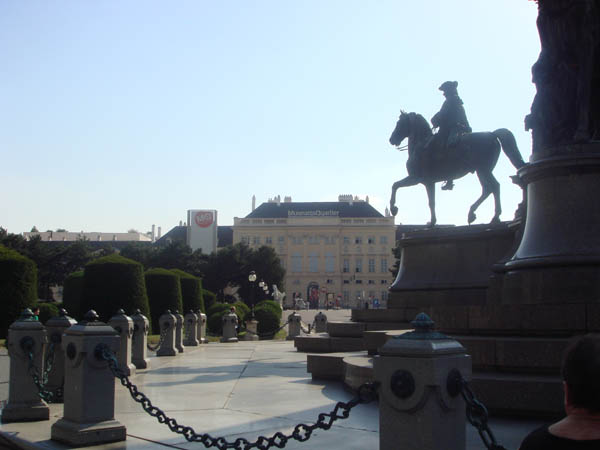Art Blogs
11.08.2016
Form and color have always existed in painting. light, too, albeit cryptically. But the concept of light in painting only crystallized relatively recently – some 150 years ago. It is connected with the epoch of modernism (1874–1957), and more specifically with the impressionists. Beginning with Claude Monet, they suddenly began to paint the "cube of air" between the haystack and their eyes. Or, in other words, the "cube of light." The explicit use of light in the language of painting thus began in a meaningful and urgent way only in the 1870s.
But even the impressionists did not understand the nature of light in an ontological sense. Only in the 1920s did Martin Heidegger begin to analyze it. White Light, in Russian. Lichtung, in German.
Light is invisible, but without it nothing exists. Light is necessary in order to see something. In particular, a painting. Heidegger's metaphysics (unlike that of Kant or Hegel) focuses on one thing: why does a person see what he sees? He does not construct the context in which he acts in History. Light exists earlier than the earliest thought, whatever exactly it is. After seeing something with mental vision, the artist hurries to capture (begreifen!) the subject and erases from sight the light in which he sees it. The more light, the more the artist's gaze is drawn to the subject, the less the light itself is noticed. But moments of illumination comprise the artist's creative work in a more important sense than whether the subject is captured or not captured. Illumination is not within the artist's control. All he can do is be ready for illumination, be alert to it, have the ability to use it fully in his work, and understand that it was in fact illumination.
Remarkably, the artist and thinker Omar Chkhaidze was receptive to illumination when he was very young, in the 1960s. And he was more than merely ready for it. light became his most important subject. It was a very different light to that of the impressionists. He painted White Light, his own White Light. He created his own ontological picture of the world: Ascension (1966), Touch (1967), On The Way (1969).
In these black paintings, the White Light is clearly structured – it is not chaotic light, it is a cosmic, orderly form. The juxtaposition of Cosmos and Chaos. It is an internally articulated whole: the creative light of the Creator, Fauvist light, or the "black sun" of the German mystics or Russian symbolists.
As a mystically oriented artist, Chkhaidze has permitted himself something that is extraordinarily difficult – existing simultaneously in two "orthogonal" spaces, the secular and the sacred. The name of the painting "Ascension" (1966) could not possibly have religious connotations by chance. It is a sacred name. In this complete, solid, immutable painting, Omar Chkhaidze deforms, reforms and finally transforms light. He translates it, in the viewer's mind, from the physical (secular) space to the metaphysical (sacred). This dual life of light (as a subject and its perfect execution) immediately takes the artist in its exclusive world. A thinker, metaphysicist and innovator, the artist Omar Chkhaidze is completely unique. And so his works are completely recognizable. Although he allows himself to periodically "change his manner" – to change the language, method, style, or theme of his work – he is nevertheless recognizable. He can even paint in a figurative way – he is nevertheless recognizable. The most-important characteristic of a major artist – recognizability – is inscribed in Omar Chkhaidze's genes. It cannot be faked. It cannot be imitated.
The astonishing quality of Omar Chkhaidze as an artist is that, in the age of postmodernism, he has never been a postmodernist. He has remained a modernist, meaning he has always painted the new, created something novel, developed a "new understanding of novelty," rather than recreating the Old Masters using a new language. He painted a new subject, light, which was non-figurative.
Omar Chkhaidze in fact followed in the footsteps of the first non-figurative, avant-garde artists, also, as they did, developing the language of pure art. In particular he moved away from geometric figures toward his light as the main subject of his paintings. And he began to to teach artists and viewers to read this non-figurative language, and understand anew the philosophy of non-figurative – illumino-figural! – painting.
In 1936, the great philosopher Alexander Kozhev corrected the philosophy and terminology of non-figurative artists, and said their art was actually "concrete" instead of "abstract." Kandinsky agreed, but the others were unaware of it. It would of course be very difficult today to discard the term "abstract painting." Nevertheless we must replace it with the term and, more importantly, the philosophy of "concrete painting." Omar Chkhaidze was one of the first who dared to take up this heavy load.
His most recent works, created in the 2000s, show that the non-figurative (concrete) painting movement initiated in the 1910s and 1920s by Mondrian and Malevich, and also the pangeometric traditions that have played out for centuries, have been successfully concluded. In the third millennium, Chkhaidze believes, a new era in art has begun – the era of light. He creates the painting "Out into Light", steps out into transcendental zero and paints only light, only spiritual light. And so, 100 years after the pioneering breakthroughs of Kandinsky and Malevich, Russia has once again found itself at the center of global cultural processes thanks to the quantum leap of Omar Chkhaidze.
Any question please e-Mail : gallery@Gallery-OmarChkhaidze.com
Out into Light
Form and color have always existed in painting. light, too, albeit cryptically. But the concept of light in painting only crystallized relatively recently – some 150 years ago. It is connected with the epoch of modernism (1874–1957), and more specifically with the impressionists. Beginning with Claude Monet, they suddenly began to paint the "cube of air" between the haystack and their eyes. Or, in other words, the "cube of light." The explicit use of light in the language of painting thus began in a meaningful and urgent way only in the 1870s.
But even the impressionists did not understand the nature of light in an ontological sense. Only in the 1920s did Martin Heidegger begin to analyze it. White Light, in Russian. Lichtung, in German.
Light is invisible, but without it nothing exists. Light is necessary in order to see something. In particular, a painting. Heidegger's metaphysics (unlike that of Kant or Hegel) focuses on one thing: why does a person see what he sees? He does not construct the context in which he acts in History. Light exists earlier than the earliest thought, whatever exactly it is. After seeing something with mental vision, the artist hurries to capture (begreifen!) the subject and erases from sight the light in which he sees it. The more light, the more the artist's gaze is drawn to the subject, the less the light itself is noticed. But moments of illumination comprise the artist's creative work in a more important sense than whether the subject is captured or not captured. Illumination is not within the artist's control. All he can do is be ready for illumination, be alert to it, have the ability to use it fully in his work, and understand that it was in fact illumination.
Remarkably, the artist and thinker Omar Chkhaidze was receptive to illumination when he was very young, in the 1960s. And he was more than merely ready for it. light became his most important subject. It was a very different light to that of the impressionists. He painted White Light, his own White Light. He created his own ontological picture of the world: Ascension (1966), Touch (1967), On The Way (1969).
In these black paintings, the White Light is clearly structured – it is not chaotic light, it is a cosmic, orderly form. The juxtaposition of Cosmos and Chaos. It is an internally articulated whole: the creative light of the Creator, Fauvist light, or the "black sun" of the German mystics or Russian symbolists.
As a mystically oriented artist, Chkhaidze has permitted himself something that is extraordinarily difficult – existing simultaneously in two "orthogonal" spaces, the secular and the sacred. The name of the painting "Ascension" (1966) could not possibly have religious connotations by chance. It is a sacred name. In this complete, solid, immutable painting, Omar Chkhaidze deforms, reforms and finally transforms light. He translates it, in the viewer's mind, from the physical (secular) space to the metaphysical (sacred). This dual life of light (as a subject and its perfect execution) immediately takes the artist in its exclusive world. A thinker, metaphysicist and innovator, the artist Omar Chkhaidze is completely unique. And so his works are completely recognizable. Although he allows himself to periodically "change his manner" – to change the language, method, style, or theme of his work – he is nevertheless recognizable. He can even paint in a figurative way – he is nevertheless recognizable. The most-important characteristic of a major artist – recognizability – is inscribed in Omar Chkhaidze's genes. It cannot be faked. It cannot be imitated.
The astonishing quality of Omar Chkhaidze as an artist is that, in the age of postmodernism, he has never been a postmodernist. He has remained a modernist, meaning he has always painted the new, created something novel, developed a "new understanding of novelty," rather than recreating the Old Masters using a new language. He painted a new subject, light, which was non-figurative.
Omar Chkhaidze in fact followed in the footsteps of the first non-figurative, avant-garde artists, also, as they did, developing the language of pure art. In particular he moved away from geometric figures toward his light as the main subject of his paintings. And he began to to teach artists and viewers to read this non-figurative language, and understand anew the philosophy of non-figurative – illumino-figural! – painting.
In 1936, the great philosopher Alexander Kozhev corrected the philosophy and terminology of non-figurative artists, and said their art was actually "concrete" instead of "abstract." Kandinsky agreed, but the others were unaware of it. It would of course be very difficult today to discard the term "abstract painting." Nevertheless we must replace it with the term and, more importantly, the philosophy of "concrete painting." Omar Chkhaidze was one of the first who dared to take up this heavy load.
His most recent works, created in the 2000s, show that the non-figurative (concrete) painting movement initiated in the 1910s and 1920s by Mondrian and Malevich, and also the pangeometric traditions that have played out for centuries, have been successfully concluded. In the third millennium, Chkhaidze believes, a new era in art has begun – the era of light. He creates the painting "Out into Light", steps out into transcendental zero and paints only light, only spiritual light. And so, 100 years after the pioneering breakthroughs of Kandinsky and Malevich, Russia has once again found itself at the center of global cultural processes thanks to the quantum leap of Omar Chkhaidze.
Slava LYON
Any question please e-Mail : gallery@Gallery-OmarChkhaidze.com

